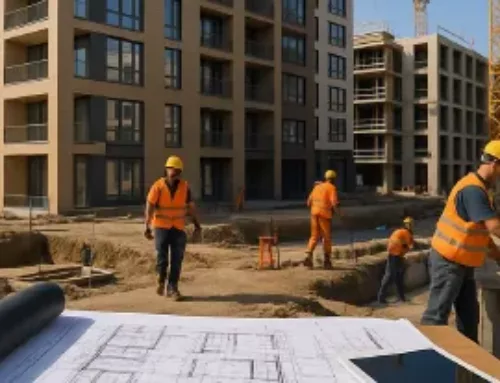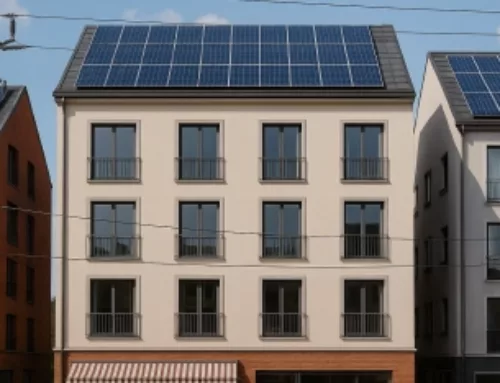About a year ago, the so-called BEG funding was stopped somewhat surprisingly at short notice. At that time, this circumstance had triggered an earthquake of medium strength on the real estate market and led many builders and project developers into veritable difficulties. At the same time, the Federal Government is required to comply with the sector-specific greenhouse gas reduction targets under the Climate Protection Act. This is a real challenge, not least in the real estate sector, and put the so called “Ampel” coalition, which had started with great ambitions in this area, under corresponding pressure to act as far as a successor model for the BEG is concerned.
It is now clear what this successor model should look like. On 25 January 2023, Federal Building Minister Klara Geywitz issued a press release and presented the new “Guideline for Federal Funding for Efficient Buildings – Climate-friendly New Construction (KFN)”.
Here is a first overview of the content:
1. When will funding begin?
Funding will start on 1 March 2023.
2. Who is eligible to apply?
Basically, all investors, especially companies.
3. Where do I apply for funding?
The Kreditanstalt für Wiederaufbau (KfW) has been commissioned. Applications must be submitted via the financing partners of KfW.
ATTENTION: the application must be submitted BEFORE the start of the project.
4. Are only new buildings funded?
No, the first acquisition is also funded, provided that this takes place within 12 months after (civil) acceptance of the construction project.
5. Does the subsidy only apply to residential buildings?
No, in addition to residential buildings, non-residential buildings that meet the corresponding requirements (see point 6) are also supported.
6. What standard do buildings have to meet in order to receive funding?
In any case, this is the standard Efficiency House 40/ Efficiency Building 40. In addition, the building must fall within the scope of the Building Energy Act (Gebäudeenergiegesetz) and meet the requirements for the Sustainable Building PLUS (QNG-PLUS) quality seal. In addition, there will be further minimum technical requirements, which will result from a regularly updated KfW leaflet.
Incidentally, there are two stages:
(i) Funding level 1
(ii) Funding level 2, here an additional certification of an accredited certification body with the quality seal Sustainable Building PLUS (QNG-PLUS) or the quality seal Sustainable Building Premium (QNG-PREMIUM) is required.
7. Can I claim other funding at the same time?
This is possible in principle, but difficult, in particular to avoid double claims of the same eligible costs. If in doubt, you should play it safe here.
8. Is the funding earmarked?
The funding requires an appropriate use of ten years.
9. How is funding provided?
A loan is granted with interest subsidies (different only for local authorities)
10. What costs are eligible?
Basically, the entire construction costs (including technical facilities, specialist planning, construction supervision and certification).
11. What are the credit limits?
• For climate-friendly residential buildings: max. EUR 100 k per residential unit
• For climate-friendly residential buildings with QNG: max. EUR 150 k per unit
• For climate-friendly non-residential buildings: max. EUR 2 k per sqm, max. EUR 10 million per project
• For climate-friendly non-residential buildings with QNG: max. EUR 3k per sqm, max. 15 million per project
12. What is the duration?
The minimum term is 4 years.
There are different runtime variants:
(a) For residential buildings:
(i) up to 10 years, repayment at maturity, fixed interest rate for the entire repayment term
(ii) up to 10 years, max. 2 grace years, fixed interest rate for the entire repayment term
(iii) up to 25 years, max. 3 grace years, fixed interest rate first 10 years
(iv) up to 35 years, max. 5 repayment exemption years, fixed interest rate first 10 years
(b) For non-residential buildings:
(i) up to 5 years, max. 1 grace period, fixed interest rate for the entire repayment term
(ii) up to 10 years, max. 2 grace years, fixed interest rate for the entire repayment term
(iii) up to 20 years, max. 3 repayment exemption years, fixed interest rate first 10 years
(iv) up to 30 years, max. 5 repayment exemption years, fixed interest rate first 10 years
Interest rate based on capital market development, reduced from federal funds by up to 4% p.a. of the loan amount (max. 10 years)
13. Is there an entitlement to funding?
The funding takes place within the scope of dutiful discretion, but a claim may under certain circumstances be derived from the principle of self-commitment of the administration.
If you have any questions, please do not hesitate to contact us.
Foto: unsplash, Étienne Beauregard-Riverin





